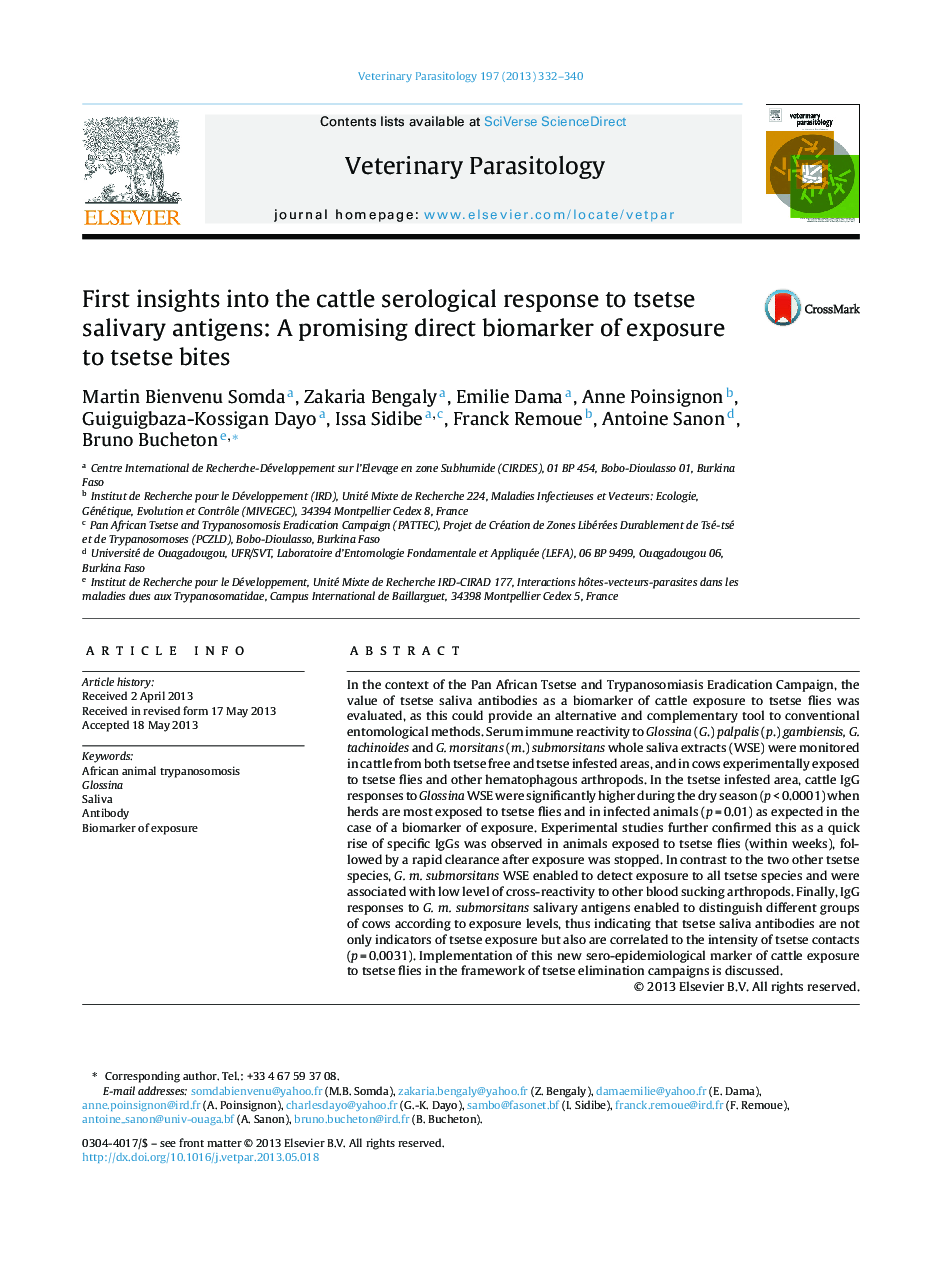| کد مقاله | کد نشریه | سال انتشار | مقاله انگلیسی | نسخه تمام متن |
|---|---|---|---|---|
| 5803662 | 1555697 | 2013 | 9 صفحه PDF | دانلود رایگان |
In the context of the Pan African Tsetse and Trypanosomiasis Eradication Campaign, the value of tsetse saliva antibodies as a biomarker of cattle exposure to tsetse flies was evaluated, as this could provide an alternative and complementary tool to conventional entomological methods. Serum immune reactivity to Glossina (G.) palpalis (p.) gambiensis, G. tachinoides and G. morsitans (m.) submorsitans whole saliva extracts (WSE) were monitored in cattle from both tsetse free and tsetse infested areas, and in cows experimentally exposed to tsetse flies and other hematophagous arthropods. In the tsetse infested area, cattle IgG responses to Glossina WSE were significantly higher during the dry season (p < 0.0001) when herds are most exposed to tsetse flies and in infected animals (p = 0.01) as expected in the case of a biomarker of exposure. Experimental studies further confirmed this as a quick rise of specific IgGs was observed in animals exposed to tsetse flies (within weeks), followed by a rapid clearance after exposure was stopped. In contrast to the two other tsetse species, G. m. submorsitans WSE enabled to detect exposure to all tsetse species and were associated with low level of cross-reactivity to other blood sucking arthropods. Finally, IgG responses to G. m. submorsitans salivary antigens enabled to distinguish different groups of cows according to exposure levels, thus indicating that tsetse saliva antibodies are not only indicators of tsetse exposure but also are correlated to the intensity of tsetse contacts (p = 0.0031). Implementation of this new sero-epidemiological marker of cattle exposure to tsetse flies in the framework of tsetse elimination campaigns is discussed.
Journal: Veterinary Parasitology - Volume 197, Issues 1â2, 18 October 2013, Pages 332-340
